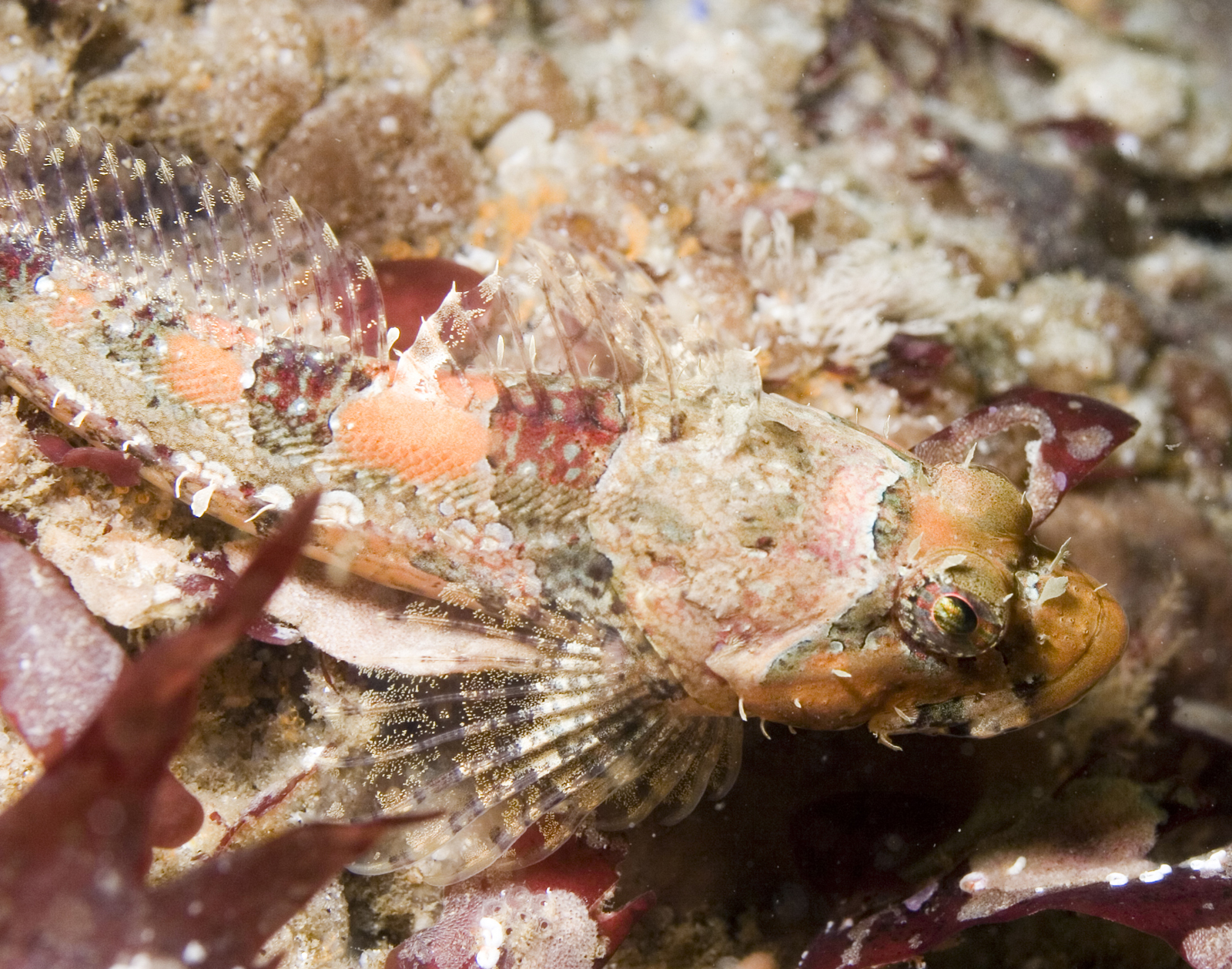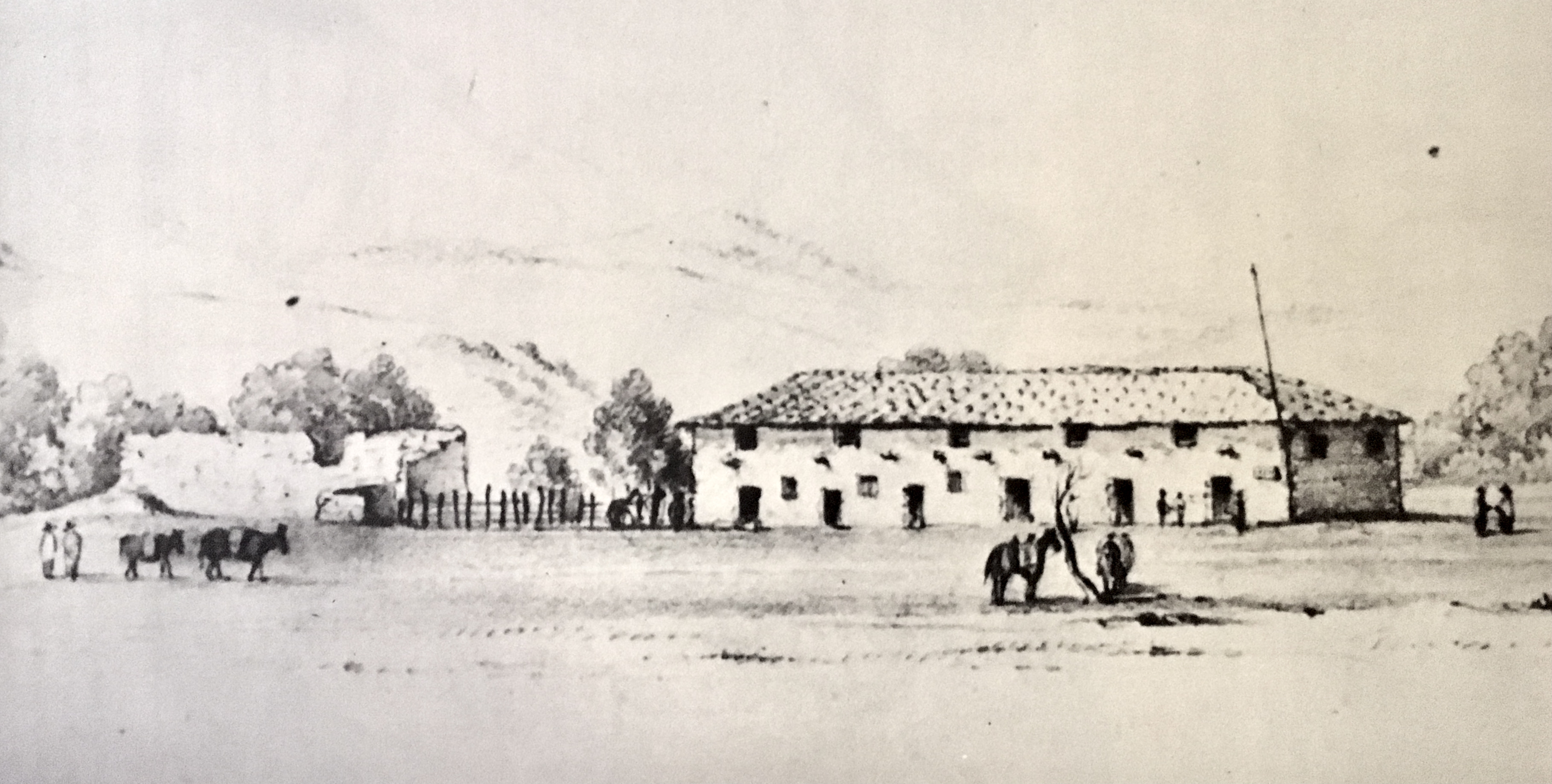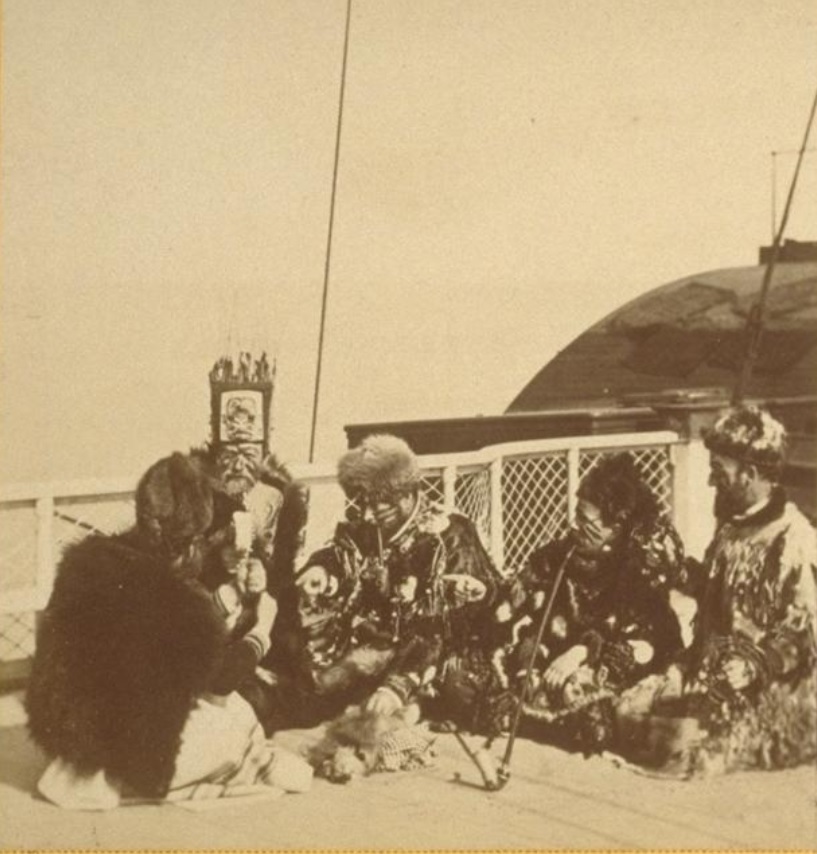|
Ascelichthys
The rosylip sculpin (''Ascelichthys rhodorus'') is a species of marine ray-finned fish belonging to the family Cottidae, the typical sculpins. This species is found in the eastern Pacific Ocean from Alaska to central California where it is an inhabitant of tidepools and other intertidal environments. This species grows to a length of TL. This species is the only known member of its monospecific genus ''Ascelichthys''. Taxonomy The rosylip sculpin was first formally described in 1880 by the American ichthyologists David Starr Jordan and Charles Henry Gilbert with its type locality given as Neah Bay in Washington. Jordan and Gilbert classified their new species in a monospecific genus, ''Ascelichthys''. The 5th edition of ''Fishes of the World'' classifies the genus ''Alcichthys'' within the subfamily Cottinae of the family Cottidae, however, other authors classify the genus within the subfamily Psychrolutinae of the family Psychrolutidae. Description The rosylip sculpin ha ... [...More Info...] [...Related Items...] OR: [Wikipedia] [Google] [Baidu] |
Cottidae
The Cottidae are a family of fish in the superfamily Cottoidea, the sculpins. It is the largest sculpin family, with about 275 species in 70 genera.Kane, E. A. and T. E. Higham. (2012)Life in the flow lane: differences in pectoral fin morphology suggest transitions in station-holding demand across species of marine sculpin. ''Zoology'' (Jena) 115(4), 223–32. They are referred to simply as cottids to avoid confusion with sculpins of other families. Cottids are distributed worldwide, especially in boreal and colder temperate climates. The center of diversity is the northern Pacific Ocean. Species occupy many types of aquatic habitats, including marine and fresh waters, and deep and shallow zones. A large number occur in near-shore marine habitat types, such as kelp forests and shallow reefs. They can be found in estuaries and in bodies of fresh water. Most cottids are small fish, under in length. The earliest fossil remains of cottids are otoliths potentially assignable to ... [...More Info...] [...Related Items...] OR: [Wikipedia] [Google] [Baidu] |
Psychrolutidae
The fish family Psychrolutidae (commonly known as blobfishes, flathead sculpins, or tadpole sculpins) contains over 35 recognized species in 8 genera. This family consists of bottom-dwelling marine sculpins shaped like tadpoles, with large heads and bodies that taper back into small, flat tails. The skin is loosely attached and movable, and the layer underneath it is gelatinous. The eyes are placed high on the head, focused forward closer to the tip of the snout. Members of the family generally have large, leaf-like pectoral fins and lack scales, although some species are covered with soft spines. This is important to the species as the depths in which they live are highly pressurized and they are ambush/opportunistic/foraging predators that do not expend energy unless they are forced to. The blobfish has a short, broad tongue and conical teeth that are slightly recurved and are arranged in bands in irregular rows along the premaxillaries; canines are completely absent. Teeth are ... [...More Info...] [...Related Items...] OR: [Wikipedia] [Google] [Baidu] |
Cottinae
Cottinae is a subfamily of ray-finned fishes belonging to the Family (biology), family Cottidae, the typical sculpins. The subfamily has species throughout the northern hemisphere in both marine and freshwater habitats. Genera The following genera are included within the subfamily Cottinae: References Cottidae Taxa named by Charles Lucien Bonaparte Ray-finned fish subfamilies {{Cottidae-stub ... [...More Info...] [...Related Items...] OR: [Wikipedia] [Google] [Baidu] |
David Starr Jordan
David Starr Jordan (January 19, 1851 – September 19, 1931) was the founding president of Stanford University, serving from 1891 to 1913. He was an ichthyologist during his research career. Prior to serving as president of Stanford University, he served as president of Indiana University Bloomington, Indiana University from 1885 to 1891. Jordan was also a strong supporter of eugenics, and his published views expressed a fear of "race-degeneration", asserting that cattle and human beings are "governed by the same laws of selection". He was an antimilitarist since he believed that war killed off the best members of the gene pool, and he initially opposed American involvement in World War I. Early life and education Jordan was born in Gainesville (town), New York, Gainesville, New York, and grew up on a farm in upstate New York. His parents made an unorthodox decision to educate him at a local girls' high school. His middle name, Starr, does not appear in early census records, ... [...More Info...] [...Related Items...] OR: [Wikipedia] [Google] [Baidu] |
Washington (state)
Washington, officially the State of Washington, is a U.S. state, state in the Pacific Northwest region of the United States. It is often referred to as Washington State to distinguish it from Washington, D.C., the national capital, both named after George Washington (the first President of the United States, U.S. president). Washington borders the Pacific Ocean to the west, Oregon to the south, Idaho to the east, and shares Canada–United States border, an international border with the Provinces and territories of Canada, Canadian province of British Columbia to the north. Olympia, Washington, Olympia is the List of capitals in the United States, state capital, and the most populous city is Seattle. Washington is the List of U.S. states and territories by area, 18th-largest state, with an area of , and the List of U.S. states and territories by population, 13th-most populous state, with a population of just less than 8 million. The majority of Washington's residents live ... [...More Info...] [...Related Items...] OR: [Wikipedia] [Google] [Baidu] |
Fish Described In 1880
A fish (: fish or fishes) is an aquatic animal, aquatic, Anamniotes, anamniotic, gill-bearing vertebrate animal with swimming fish fin, fins and craniate, a hard skull, but lacking limb (anatomy), limbs with digit (anatomy), digits. Fish can be grouped into the more basal (phylogenetics), basal jawless fish and the more common jawed fish, the latter including all extant taxon, living cartilaginous fish, cartilaginous and bony fish, as well as the extinct placoderms and acanthodians. In a break to the long tradition of grouping all fish into a single Class (biology), class (Pisces), modern phylogenetics views fish as a paraphyletic group. Most fish are ectotherm, cold-blooded, their body temperature varying with the surrounding water, though some large nekton, active swimmers like white shark and tuna can hold a higher core temperature. Many fish can communication in aquatic animals#Acoustic, communicate acoustically with each other, such as during courtship displays. The stud ... [...More Info...] [...Related Items...] OR: [Wikipedia] [Google] [Baidu] |
San Mateo, California
San Mateo ( ) is the most populous city in San Mateo County, California, United States, on the San Francisco Peninsula. It is part of the San Francisco Bay Area metropolitan region, and is located about south of San Francisco. San Mateo borders Burlingame, California, Burlingame to the north, Hillsborough, California, Hillsborough to the west, San Francisco Bay and Foster City, California, Foster City to the east and Belmont, California, Belmont to the south. The population was 105,661 at the 2020 United States census, 2020 census. Some of the biggest economic drivers for the city include technology, health care and education. History The earliest known settlers of the Bay Area were the Ramaytush people, since at least 10000 BC. Spanish era In 1789, the Spanish missionaries had named a Native Americans in the United States, Native American village along Laurel Creek as ''Los Laureles'' or the Laurels (Mission San Mateo, Mission Dolores, 1789). At the time of Mexican War of ... [...More Info...] [...Related Items...] OR: [Wikipedia] [Google] [Baidu] |
Sitka, Alaska
Sitka (; ) is a municipal home rule, unified Consolidated city-county, city-borough in the southeast portion of the U.S. state of Alaska. It was under Russian America, Russian rule from 1799 to 1867. The city is situated on the west side of Baranof Island and the south half of Chichagof Island in the Alexander Archipelago of the Pacific Ocean (part of the Alaska Panhandle). As of the 2020 United States census, 2020 census, Sitka had a population of 8,458, making it the List of cities in Alaska, fifth-most populated city in the state. With a consolidated land area of and total area (including water) of , Sitka is the List of United States cities by area, largest city by total area in the U.S. History As part of Russian America, Russia, it was known as New Archangel (). The current name ''Sitka'' (derived from ', a contraction of the Tlingit language, Tlingit ') means "People on the Outside of Baranof Island", whose Tlingit name is ' (here contracted to '). Russian America ... [...More Info...] [...Related Items...] OR: [Wikipedia] [Google] [Baidu] |
Total Length
Fish measurement is the measuring of individual fish and various parts of their anatomies, for data used in many areas of ichthyology, including taxonomy and fishery biology. Overall length Standard length (SL) is the length of a fish measured from the tip of the snout to the posterior end of the last vertebra or to the posterior end of the midlateral portion of the hypural plate. This measurement excludes the length of the caudal (tail) fin. Total length (TL) is the length of a fish measured from the tip of the snout to the tip of the longer lobe of the caudal fin, usually measured with the lobes compressed along the midline. It is a straight-line measure, not measured over the curve of the body. Standard length measurements are used with Teleostei (most bony fish), while total length measurements are used with Myxini (hagfish), Petromyzontiformes ( lampreys) and usually Elasmobranchii (shark Sharks are a group of elasmobranch cartilaginous fish characterized by a ... [...More Info...] [...Related Items...] OR: [Wikipedia] [Google] [Baidu] |
Caudal Fin
Fins are moving appendages protruding from the body of fish that interact with water to generate thrust and help the fish swim. Apart from the tail or caudal fin, fish fins have no direct connection with the back bone and are supported only by muscles. Fish fins are distinctive anatomical features with varying structures among different clades: in ray-finned fish (Actinopterygii), fins are mainly composed of bony spines or rays covered by a thin stretch of scaleless skin; in lobe-finned fish (Sarcopterygii) such as coelacanths and lungfish, fins are short rays based around a muscular central bud supported by jointed bones; in cartilaginous fish (Chondrichthyes) and jawless fish (Agnatha), fins are fleshy " flippers" supported by a cartilaginous skeleton. Fins at different locations of the fish body serve different purposes, and are divided into two groups: the midsagittal ''unpaired fins'' and the more laterally located ''paired fins''. Unpaired fins are predominan ... [...More Info...] [...Related Items...] OR: [Wikipedia] [Google] [Baidu] |
Anal Fin
Fins are moving appendages protruding from the body of fish that interact with water to generate thrust and help the fish swim. Apart from the tail or caudal fin, fish fins have no direct connection with the back bone and are supported only by muscles. Fish fins are distinctive anatomical features with varying structures among different clades: in ray-finned fish (Actinopterygii), fins are mainly composed of bony spines or rays covered by a thin stretch of scaleless skin; in lobe-finned fish ( Sarcopterygii) such as coelacanths and lungfish, fins are short rays based around a muscular central bud supported by jointed bones; in cartilaginous fish ( Chondrichthyes) and jawless fish ( Agnatha), fins are fleshy " flippers" supported by a cartilaginous skeleton. Fins at different locations of the fish body serve different purposes, and are divided into two groups: the midsagittal ''unpaired fins'' and the more laterally located ''paired fins''. Unpaired fins are pr ... [...More Info...] [...Related Items...] OR: [Wikipedia] [Google] [Baidu] |







